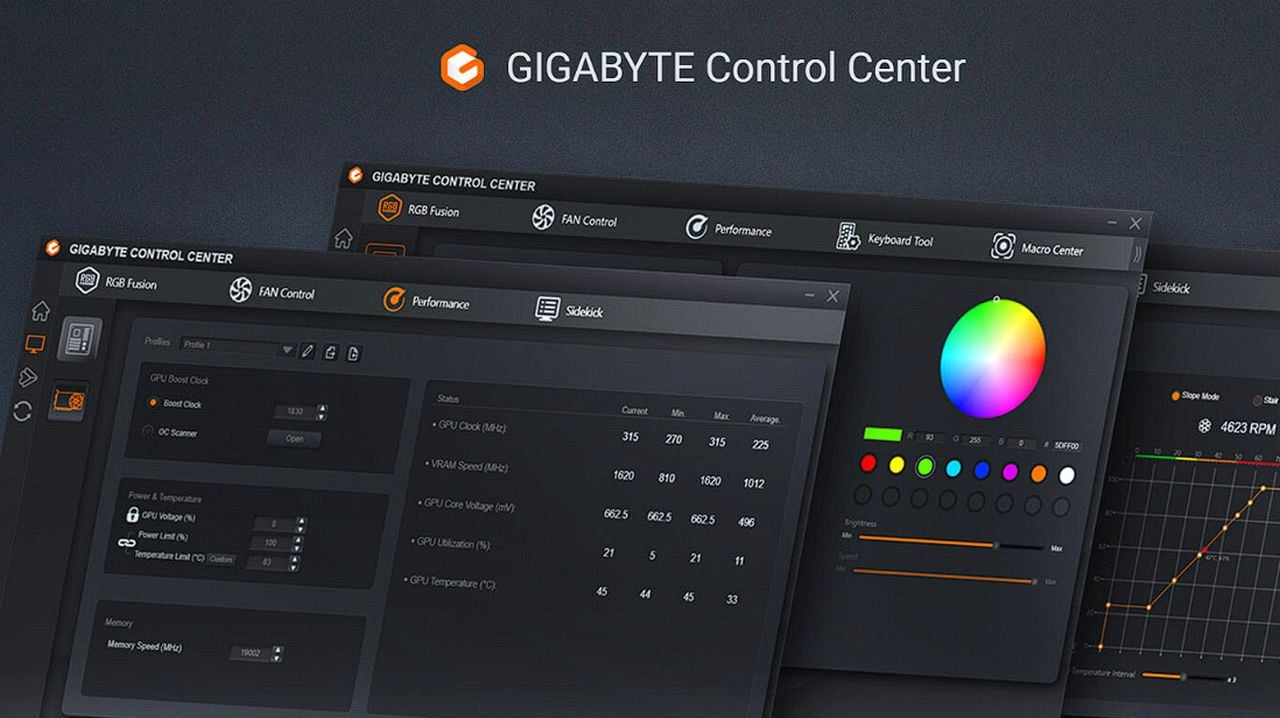
GIGABYTE has announced an important software update for its GIGABYTE Control Center (GCC), addressing and fixing user-reported issues with certain memory modules and is now available to download. The GIGABYTE Control Center (GCC) is a comprehensive software platform that spans across a multitude of GIGABYTE products. The platform is designed to provide an intuitive user interface that simplifies task completion. It includes dedicated utilities tailored to specific hardware, an Update Center to keep products up to date, and a unified interface for performance adjustments, fan control, and customizable RGB aesthetics.
The need for this update arose when GIGABYTE received feedback from users experiencing unexpected behavior and issues when using certain brand memory modules with the GCC. Upon investigation, it was discovered that some DDR modules did not comply with JEDEC specifications, leading to the failure of Serial Presence Detect (SPD) write protection. SPD is a standardized way to automatically access information about a memory module, critical for the smooth operation of the system.
GIGABYTE Control Centre software
Addressing this issue swiftly and efficiently, GIGABYTE updated the BIOS within a month to enable SPD write protection from the motherboard side. This solution not only helped customers avoid and resolve the existing problem, but also preempted potential future issues related to non-compliance of DDR modules with JEDEC specifications.
The latest GCC software update, version rev.23.12.06.01, includes significant improvements, focusing on optimizing the retrieval process of SPD information and reinforcing SPD protection. This update is a testament to GIGABYTE’s commitment to continually refining its software to enhance user experience and system performance.
Users are encouraged to download and install the latest version of GCC from the official GIGABYTE website. With this update, GIGABYTE aims to provide a more seamless and trouble-free experience for its users.
What is Serial Presence Detect (SPD) write protection?
Serial Presence Detect (SPD) write protection is a feature related to computer memory, specifically RAM modules. SPD is a standardized way to automatically access information about a memory module, including its size, speed, voltage, and other parameters necessary for proper operation. This information is stored in a small EEPROM (Electrically Erasable Programmable Read-Only Memory) on the RAM module.
The primary function of SPD is to provide the system’s BIOS or memory controller with the necessary details to correctly configure the memory settings for optimal performance and stability. When you install RAM in a computer, the SPD data is read to set up the memory timings and voltages correctly.
SPD write protection comes into play as a security measure. It is designed to prevent unauthorized or accidental modification of the SPD data. Since the SPD data is crucial for the memory module’s operation, any incorrect alteration can lead to system instability, performance issues, or even hardware damage. By implementing write protection, manufacturers ensure that the SPD data remains consistent and unaltered, safeguarding the module’s integrity.
In a practical sense, SPD write protection means that while you can read the information from the EEPROM on the RAM module, you cannot write to or modify it without specific tools or permissions. This feature is particularly important in environments where system stability and security are paramount, such as in servers or workstations.
GIGABYTE Technology continues to demonstrate its commitment to user satisfaction and system performance through regular software updates and improvements. This latest update to the GIGABYTE Control Center (GCC) addresses crucial issues with memory modules, thereby ensuring a more reliable and efficient user experience. It is a clear example of how user feedback can drive significant improvements in technology, and how manufacturers like GIGABYTE are committed to addressing these concerns promptly and effectively For more information and to download the latest release jump over to the official GIGABYTE website.
Here are some other articles you may find of interest on the subject of DDR memory :
Filed Under: Technology News, Top News
Latest timeswonderful Deals
Disclosure: Some of our articles include affiliate links. If you buy something through one of these links, timeswonderful may earn an affiliate commission. Learn about our Disclosure Policy.

